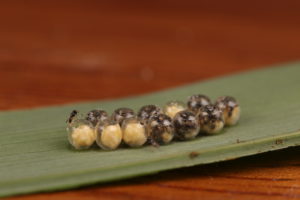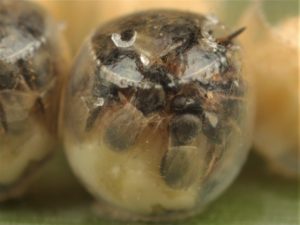Eggcellent
To date, just over 1 million species of insects have been described and many millions more are out there to be ‘discovered’ and described. Even of the species that have been described, the vast majority are nothing more than a scientific name and specimens in museum. We know precious little about the basic biology of these described species. Where exactly do they live and what other organisms do they interact with? It would take an army of biologists thousands of years to answer these questions.
When you’re out to catch lots of insects all you typically see are the numerous specimens caught in the many types of trap entomologists have at their disposal. This is especially true for the very small parasitoid wasps that are among the most diverse animals on the planet. You can catch these by the hundreds and thousands in various trap and even wielding a sweep net for a few minutes will catch you loads of them. On the whole, we know next to nothing about these animals, but sometimes, if you’re lucky, you might get a glimpse into their lives.
While walking the trails of the Los Amigos research station in southern Peru I had one of these lucky encounters and I saw a little of what one of these wasps gets up to. I noticed a clutch of insect eggs on the underside of a bamboo leaf. I’m not sure who laid them, but they could be the brood of a true bug.
Having a closer look I could see the eggs had been ravaged by parasitoids, many of which were making good their escape. I took the eggs back to the lab space of the field centre to get some better photos. Only when you see them close up can you see just how many wasp are crammed into each egg. Each host egg had nurtured about 20 parasitoid wasps – tiny, black scelionids little more than 1 mm long.
This observation really underscores the harsh realities of nature. The majority of the eggs produced by any given insect species will meet a similar, grisly end. Even if they dodge the parasitoids that might just be laid in slightly the wrong position and be desiccated or consumed by pathogens. Plenty will get gobbled up in their entirety by larger predators. The probability of any one egg hatching and the offspring reaching maturity is vanishingly small.


Leave a Reply